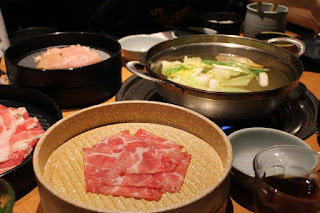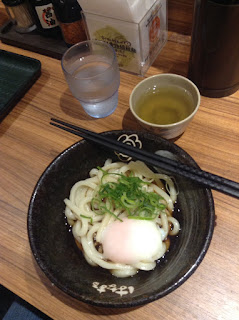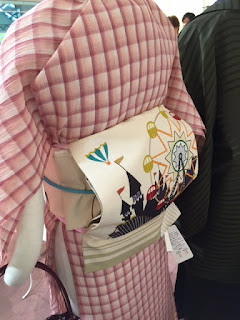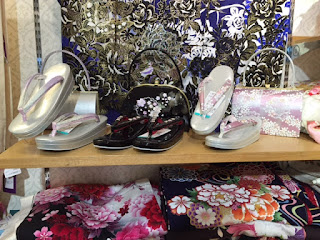As our study comes to a close, it’s time to give a round-up
of the trip as a whole. There's so much to talk about, I've been keeping family and friends updated on Facebook every day but if I put that all here there'd be way too much. So, instead, I'll focus on some of the things I thought were the most important, and put some of my innermost thoughts down instead of just a recounting of events.
Classes
I guess I'll start with the main reason for our trip, the actual classes. I was incredibly stressed going into the placement test. I really wanted to do well but felt completely unprepared. I discovered my feelings were indeed warranted, as I ended up in the lowest level class among our group. I ended up being really frustrated with myself the first day of class because of it. However, as time went on, I realized it didn't really matter what class I was placed in. I was able to reinforce some of the more basic concepts I struggled with and actually ended up learning a lot. Most importantly, I think I was able to improve my listening and speaking skills quite a bit. I'm still not quite at the level where I can have a fluid conversation on the fly, but being forced to listen to the teachers speak only in Japanese and doing dictation practice every day was very helpful.
I think the only real complaint I have was how tight the schedule was. Most days it felt like going out to experience Japan after classes meant staying up till 2 am to do homework. Heck, even nights when I didn't go out usually ended in me staying up till 1 or 2 am doing homework. Basically, it felt like doing a semester's worth of Japanese classes in a single month and it ended up being pretty overwhelming at times, resulting in many days spent exhausted from lack of sleep.
However, even the tough schedule was a good experience in its own way. All 20 of us were stuck in the same boat, so I think the late night study sessions brought us closer together as a group. Back in Canada, I usually study alone and, for me, it can feel really difficult at times to keep studying when I don't have a goal to share with other people. Here, even if it was just in the back of my mind, I felt like I was having fun studying with everyone even when I was dying from exhaustion. The tight schedule definitely also helped me fix my procrastination problem. There was no time to procrastinate here without suffering health wise, so I usually kept my nose to the grindstone till things got done. Hopefully I can keep that habit when I get back to Canada!
I already talked a lot about food in my last blog post, so I guess I'll just do a quick summary here. Japanese food is amazing, delicious, cheap, abundant, and amazing. Yes I said it twice, and I'll say it again, it's amazing. The food here is one of the things I'll miss the most by far when I go back to Canada. I guess I'll have to learn to make it myself so I don't end up missing it too much.
Meeting New People.
The last thing I'll talk about is my social experience in Japan. When it comes to meeting new people, I am as self contradictory as it gets. I love meeting new people and hanging out with everyone, but I often struggle with getting past the introduction phase because of nerves and it takes me while to get used to being around new people. Combine that with the fact that I couldn't, and still can't really, hold a conversation well in Japanese and you have a the perfect recipe for difficulty making new friends.
It really helped that everyone was so friendly though. Every Japanese person I met wanted to do things together or make conversation, and most everyone was very patient with my Japanese skills. In the end, I made a lot of friendships and connections I'll treasure for a long time. I feel like I grew especially close with my fellow University of Calgary students. I was really nervous meeting such a big group of people all at once, but now I'm extremely sad I won't be able to see their faces every day. We became so close over such a short period of time, I'll definitely be keeping in touch with everyone when we get back to Canada.
Closing Remarks
I think that just about sums up most of my thoughts on Japan. This trip had its up and downs but, it was an experience I'll never forget and that I'll treasure for the rest of my life. I've had so much fun and learned so much, about Japanese and about life in general. There's a part of me that never wants to leave here, and I eagerly await the day I can return. Until next time, Japan!
It really helped that everyone was so friendly though. Every Japanese person I met wanted to do things together or make conversation, and most everyone was very patient with my Japanese skills. In the end, I made a lot of friendships and connections I'll treasure for a long time. I feel like I grew especially close with my fellow University of Calgary students. I was really nervous meeting such a big group of people all at once, but now I'm extremely sad I won't be able to see their faces every day. We became so close over such a short period of time, I'll definitely be keeping in touch with everyone when we get back to Canada.
 |
| Few bonds are greater than those created by Mudkips. |
I think that just about sums up most of my thoughts on Japan. This trip had its up and downs but, it was an experience I'll never forget and that I'll treasure for the rest of my life. I've had so much fun and learned so much, about Japanese and about life in general. There's a part of me that never wants to leave here, and I eagerly await the day I can return. Until next time, Japan!






















































